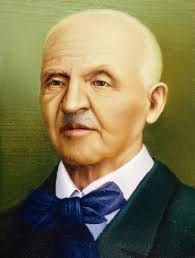The Majestic Journey of Bruckner’s Symphony No. 4 in E-flat Major (“Romantic”)
Anton Bruckner’s Symphony No. 4 in E-flat Major, popularly known as the “Romantic” Symphony, stands as one of the most beloved and frequently performed works in his symphonic output. With its sweeping melodies, heroic themes, and spiritual depth, this masterpiece not only marks a turning point in Bruckner’s career but also reflects the grandeur and mysticism of the Romantic era in music.
A New Direction for Bruckner
Composed in 1874 and substantially revised in 1878–1880, Symphony No. 4 is the only one among Bruckner’s symphonies to bear a descriptive title given by the composer himself: Die Romantische (“The Romantic”). Unlike his earlier, more abstract symphonies, the Fourth was conceived with vivid imagery and a programmatic inspiration, particularly drawing on medieval themes of knights, castles, and hunting scenes.
This symphony represents Bruckner’s response to the emotional and pictorial language that was becoming increasingly prominent in the music of his time, especially under the influence of Wagner, whom Bruckner deeply admired.
The Struggle to Finalize the Vision
Bruckner was known for his perfectionism and constant revisions. Symphony No. 4 underwent multiple versions, with major rewrites of the finale and modifications to orchestration and structure. The original 1874 version was never performed in Bruckner’s lifetime, as he himself felt it didn’t fully capture the vision he had intended.
The most widely performed version today is the 1878–1880 revision, particularly the 1880 version with the “Volksfest” (Folk Festival) Scherzo, which Bruckner later replaced with a hunting scherzo that better fit the overall atmosphere of the symphony. The 1880 revision was premiered in Vienna on February 20, 1881, under the baton of Hans Richter, and it received a warm reception—the first such success in Bruckner’s career.
A Symphony of Heroism and Nature
Bruckner once described the symphony’s first movement as depicting a “medieval city at dawn.” This sets the tone for the epic journey that follows. The opening horn call evokes a misty forest, gradually unveiling a majestic musical landscape.
The second movement (Andante quasi allegretto) is more introspective, conveying a sense of sacred stillness or perhaps a solemn procession through ancient times. The third movement (Scherzo) paints a vigorous hunting scene, complete with galloping rhythms and rustic dance-like trio. The finale, which Bruckner labored over extensively, brings the work to a thunderous conclusion, balancing lyrical passages with dramatic orchestral climaxes.
Reception and Legacy
The “Romantic” Symphony marked a turning point in Bruckner’s life, gaining him long-awaited recognition in the musical world. While his earlier symphonies were met with skepticism, this symphony was more accessible and resonated with audiences and critics alike. Its vivid imagery and tonal beauty made it a favorite of conductors like Wilhelm Furtwängler, Herbert von Karajan, and Sergiu Celibidache, who helped cement its place in the concert repertoire.
Today, Symphony No. 4 remains one of the most performed and recorded of all Bruckner’s works. Its grandeur, spiritual dimension, and deeply human character continue to captivate listeners, offering a powerful expression of Romantic ideals through the unique voice of Anton Bruckner.


Comments are closed